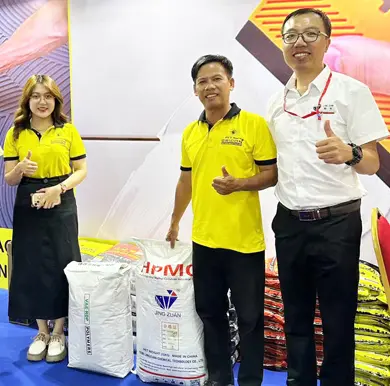
Dàmh . 18, 2024 15:44 Back to list
HPMC Applications and Benefits in Wall Putty Formulation and Performance Improvement
The Importance of HPMC in Wall Putty Enhancing Performance and Durability
Wall putty is a vital component in the construction and renovation industry, widely used to achieve a smooth and even surface on walls before the application of paints or wallpapers. One of the key ingredients that enhances the performance of wall putty is Hydroxypropyl Methylcellulose (HPMC). This versatile compound not only improves the esthetic appeal of surfaces but also contributes significantly to the functional properties of wall putty.
What is HPMC?
HPMC is a cellulose ether derived from natural cellulose. It is widely used in various applications, including construction, pharmaceuticals, and food industries, due to its excellent water retention, thickening, and binding properties. In wall putty formulations, HPMC acts as a vital additive that enhances workability, adhesion, and the overall quality of the product.
The Role of HPMC in Wall Putty
1. Improved Workability One of the primary benefits of incorporating HPMC into wall putty is its ability to improve the workability of the mixture. HPMC increases the viscosity of the putty, allowing for easier application and spreading. Craftsmen can apply the putty more uniformly on various surfaces, reducing the likelihood of imperfections and ensuring a smooth finish.
2. Enhanced Water Retention HPMC possesses excellent water retention properties. This characteristic allows the wall putty to maintain moisture during application and drying, which is crucial for proper hydration and curing of the putty. Improved water retention leads to better adhesion of the putty to the wall substrate and minimizes the risk of cracks, peeling, or sagging over time.
hpmc for wall putty

3. Increased Adhesion Adhesion is a critical factor in the durability of wall putty. The addition of HPMC enhances the adhesive properties of the putty, ensuring a strong bond between the putty and the substrate. This built-in adhesion results in a longer-lasting finish, reducing maintenance needs and increasing the lifespan of the applied coating.
4. Reduced Shrinkage As wall putty dries, shrinkage can sometimes lead to cracks and other issues. HPMC helps mitigate this problem by minimizing shrinkage as the material cures. This advantage not only contributes to the structural integrity of the applied layer but also reduces the frequency of repairs needed due to cracking.
5. Compatibility with Other Additives HPMC is compatible with a wide range of other materials used in wall putty formulations, such as polymers, pigments, and fillers. This compatibility allows formulators to create custom blends tailored to specific performance requirements without compromising the integrity of the product.
Conclusion
In summary, the incorporation of HPMC into wall putty formulations significantly enhances the performance, workability, and durability of the product. Its ability to improve water retention, adhesion, and reduce shrinkage makes it an essential ingredient in modern wall putty applications. As the construction industry continues to evolve, the demand for high-performance building materials will only increase, making HPMC a crucial component in achieving superior wall finishes.
Through its multifunctional properties, HPMC not only supports the practical aspects of wall putty but also addresses the aesthetic needs of contemporary architectural design. With ongoing advancements and innovations in the formulation of wall putty, the future looks promising for this essential building material, and HPMC will undoubtedly play a pivotal role in shaping its development.
-
What Is HPMC: Meaning,Applications
NewsApr.02,2025
-
Redispersible Polymer Powder (Rdp): Uses, Price, And Suppliers
NewsApr.02,2025
-
Hydroxyethyl Cellulose (Hec): Uses, Suppliers, And Buying Guide
NewsApr.02,2025
-
Hpmc (Hydroxypropyl Methylcellulose): Applications, Suppliers, And Buying Guide
NewsApr.02,2025
-
Guide to Mortar Bonding Agent
NewsApr.02,2025
-
Buying Guide to Redispersible Powder
NewsApr.02,2025







